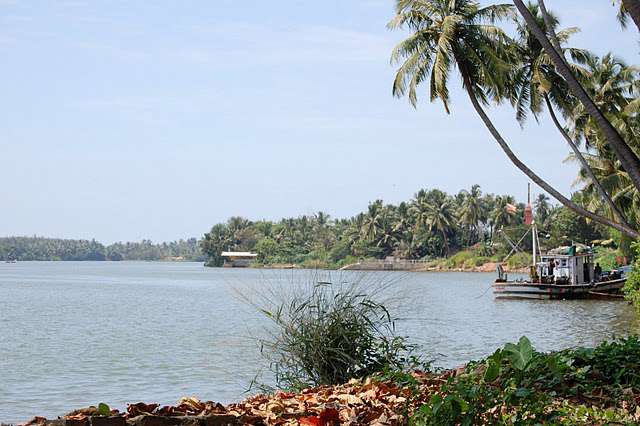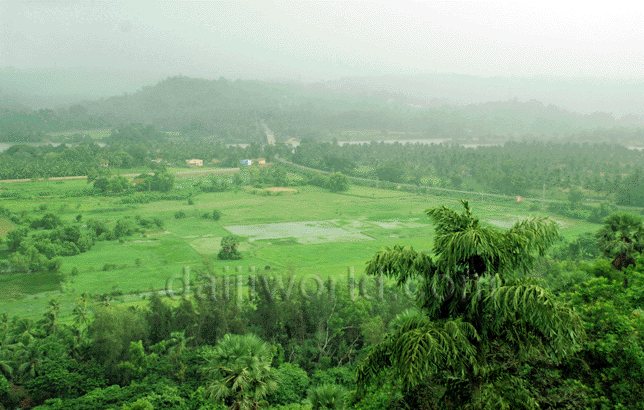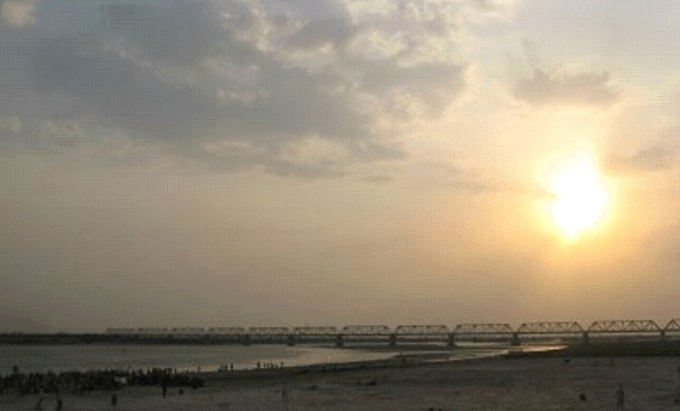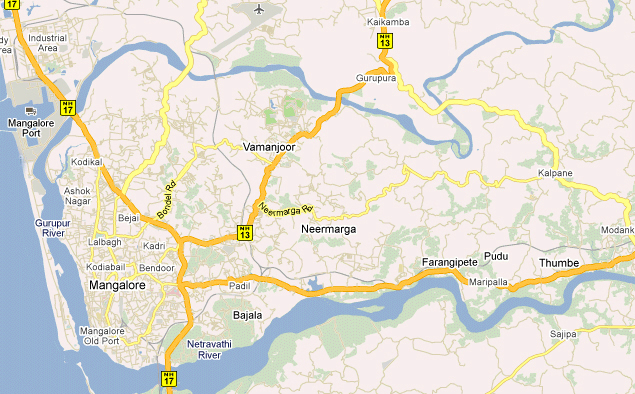
|
|
|
|
BY: SUN STAFF

Phalguni River, Karnataka Mar 25, CANADA (SUN) — A serial exploration of the holy sites visited by Lord Caitanya. Phalgu-tirtha
In a few of the earlier segments in this series we mentioned a Karnataka site visited by Lord Caitanya Mahaprabhu, known as Phalgu-tirtha. We find the first mention of this place in the Summary of Sri Caitanya-caritamrta Madhya Lila 9:
Madhya Lila 9 Summary "At the village of Udupi He saw the Gopala Deity installed by Sri Madhvacarya. He then defeated the Tattvavadis in sastric conversation. The Lord next visited Phalgu-tirtha, Tritakupa, Pancapsara, Surparaka and Kolapura." Later in Madhya Lila 9 we find further mention: Madhya 9.278
"Thus Sri Caitanya Mahaprabhu broke the pride of the Tattvavadis to pieces. He then went to the holy place known as Phalgu-tirtha." Phalgu-tirtha is located in Karnataka, as are Udupi, where Lord Caitanya defeated the Tattvavadis before traveling to Phalgu-tirtha, and Tritakupa at Belur, where He traveled after departing Phalgu-tirtha.

Gurupura River valley When making a search for the location of Phalgu-tirtha, also known as Falgu Teerath, we find that the place name is not found on modern maps, and no specific information is provided in Madhya Lila 9. In an earlier segment on Tritakupa, we mentioned references found which suggest that the Falgu pilgrimage site is at Tritakupa, Belur. Belur (Bellur) is located about 300 km southeast of Udupi. While in Belur, Lord Caitanya visited the Channakeshava temple, among other holy places.

Gurupura (Phalguni) River In another earlier segment, on Pancapsara, we mentioned a reference from Srimad-Bhagavatam 10.79.9-21 about Lord Balarama's travels and His visit to Pancapsara Lake, after which He traveled to Phalguna-tirtha. Srimad-Bhagavatam 10.79.9-21 "There at Setubandha (Ramesvaram) Lord Halayudha gave brahmanas ten thousand cows in charity. He then visited the Krtamala and Tamraparni rivers and the great Malaya Mountains. In the Malaya range Lord Balarama found Agastya Rsi sitting in meditation. After bowing down to the sage, the Lord offered him prayers and then received blessings from him. Taking leave from Agastya, He proceeded to the shore of the southern ocean, where He saw Goddess Durga in her form of Kanya-kumari. "Next He went to Phalguna-tirtha and bathed in the sacred Pancapsara Lake, where Lord Visnu had directly manifested Himself. At this place He gave away another ten thousand cows." This reference is an important marker in helping to establish the location of Phalgu-tirtha. Pancapsara Lake at Belur is a very well known holy site. This, and the information provided with respect to Tritakupa gives us a good indication that Phalgu-tirtha is in the region of Belur, Karnataka. Further, the sequence of the Lord's pada-yatra stops is confirmed by author Jadunath Sarkar in his book, Chaitanya's Pilgrimages and Teachings (Calcutta 1913), a commentary on Madhya lila. In it, he writes: "After thus humbling the pride of that sect [the Tattvavadis] the Master went to the Falgu shrine, then to Tritakupa (the shrine of Bishala), Panchapsara, Gokarna (where Shiva is worshipped), Dwaipayani, Suprak, Kolhapur (where He beheld Lakshmi and Kshir Bhagavati), Nanga-Ganesha, Chor Parvati, and Pandupur. Here before Vithal's image He sang and danced long." Again, we see the Lord's progression in moving from Udupi towards Belur. Sarkar's information was derived, at least in part, from the diary of Govinda das. So although there are several other places in India known as Phalgu-tirtha – most notably in Pharal near Kurukshetra, and at Gaya, Bihar, all the evidence points to the Phalgu-tirtha Lord Caitanya visited being in Karnataka, near Belur.

Gurupura and Netravathi Rivers at Mangalore As we have seen in the case of other places visited by Lord Caitanya during His preaching sojourns, the difficulty in pinpointing Phalgu-tirtha's location is exacerbated by the changing of a river's name. In this case the river is the holy Phalguni River, today known as the Gurupura. It seems quite certain that at some point along this river, Lord Caitanya bathed at a holy shrine referred to as Phalgu-tirtha, or as Sarkar describes it, the Falgu shrine. The Gurupura River flows westward from the Western Ghats through the town of Gurupura to the port at Mangalore, where it flows into the Arabian sea at Tannirubhavi (Tannir Bhavi). Also known as the Kulur River, the Gurupura's ancient name was Phalguni, and by that name it was known to be the northern boundary of Mangalooru, which had the Netravathi River as its southern boundary. Today the Gurupura River appears on maps to originate near Venur, about 100 km west of Belur. Of course, we have no way of knowing how much closer to Belur the source of the Phalguni might once have been. We do know that in the case of both Udupi and Belur, in the past these place names were used quite broadly, to describe a large region around the towns. In other words, the statements describing Phalgu-tirtha at Belur make good sense if we consider the source point of the river to be in the Belur region, which it certainly appears to be.
| |